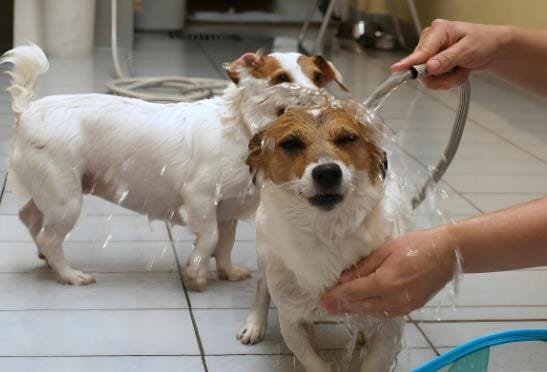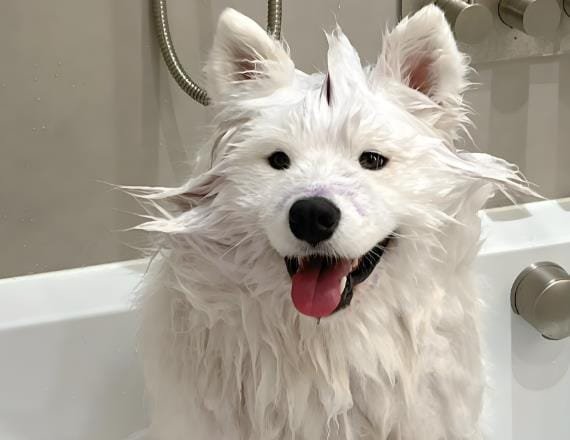
Dog Bath Frequency: Breed-Specific Washing Guidelines
How Often Should You Bathe Your Pup? Tips Tailored to Their Breed
Wondering how frequently to suds up your furry buddy? Well, it’s not a one-size-fits-all answer! Different breeds have unique coats and skin needs, so let’s break it down in a way that’s easy to grasp—no fancy jargon, just straight talk.
Short-Haired Breeds (Like Beagles or Labradors):
Got a smooth-coated pal? These pups usually don’t need baths every week. Their fur doesn’t trap dirt as easily, so washing them every 6-8 weeks works for most. But hey, if they’ve rolled in something gross (you know they will!), grab the shampoo ASAP. Overdoing it? That can strip their skin of natural oils, leaving them itchy. Not cool!

Fluffy Friends (Poodles, Shih Tzus, etc.):
Curly or silky coats need more TLC. Without regular grooming, their fur mats up fast. Aim for a bath every 3-4 weeks to keep their locks soft and tangle-free. Pro tip: Use a gentle conditioner afterward—it helps!
Double-Coated Breeds (Huskies, Golden Retrievers):
These guys have that thick undercoat you’re always vacuuming. Bathing them too often? Big mistake! It messes with their insulation. Stick to every 8-12 weeks unless they’re really dirty. Brushing them weekly? That’s the real MVP for reducing shedding and keeping their coat healthy.
Wrinkly Pups (Bulldogs, Shar-Peis):
All those cute folds? They’re dirt magnets. For these guys, wipe their wrinkles daily with a damp cloth to prevent infections. Full baths? Every 2-4 weeks should do, but don’t skip drying those creases thoroughly. Moisture hiding in there? Recipe for skin trouble.
Oily-Coated Breeds (Basset Hounds, Cocker Spaniels):
Some breeds naturally have greasier fur (thanks, genetics!). Basset Hounds, for example, might need a bath every 2-3 weeks to avoid that “wet dog” smell. Cocker Spaniels? Their luscious ears and feathery legs trap oil, so keep shampoo handy every 4-6 weeks.

What About Puppies or Sensitive Skin?
Baby dogs or pups with allergies need extra care. Harsh shampoos? Nope! Opt for oatmeal-based products and keep baths short. Ask your vet for timing—some might need monthly rinses, others less.
Quick Reminders:
- Always use lukewarm water—hot water irritates skin.
- Brush before bathing to remove loose fur.
- Watch for scratching or redness afterward. If it happens, switch shampoos or space out baths.
So, there you go! Tailor bath time to your dog’s breed, and you’ll both be happier. Got a specific pup in mind? Maybe ask your groomer or vet for backup—they’ll know the nitty-gritty details!
American Dingo animal behavior Budget Tips canine behavior Canine Care Canine Health DIY pet projects dog behavior Dog Breeds dog care Dog Care Tips dog exercise Dog Food Dog Grooming dog health Dog Measurement dog nutrition dog ownership dog potty area Dog Training Dog Wound Care Family Pets Hunting Dogs lipomas in dogs newborn puppy care obedience training outdoor pet care Pet Care Pet Care Tips Pet Health Pet Loss Pet Safety pet tips pet training Positive Reinforcement Potty Training Puppy Care puppy health Puppy Training Rabies in Dogs Temperature Monitoring Training Tips veterinary advice Veterinary Care Veterinary Tips
-
 Daylight Saving Time & Dogs: Vet-Reviewed Effects on Canine Sleep, Behavior & Adjustment Tips
5 views
Daylight Saving Time & Dogs: Vet-Reviewed Effects on Canine Sleep, Behavior & Adjustment Tips
5 views -
 Can Dogs Get the Flu Like Humans?
3 views
Can Dogs Get the Flu Like Humans?
3 views -
 How to Safely Use a Retractable Pet Dog Leash for Walks and Training
3 views
How to Safely Use a Retractable Pet Dog Leash for Walks and Training
3 views -
 How to Teach Your Puppy to Come: A Step-by-Step Guide
3 views
How to Teach Your Puppy to Come: A Step-by-Step Guide
3 views -
 Effective Techniques to Massage Gas Out of a Dog
2 views
Effective Techniques to Massage Gas Out of a Dog
2 views -
 Master the German Shepherd Interaction Tips
2 views
Master the German Shepherd Interaction Tips
2 views -
 Essential Care Guide: Pet dogs Wellness Checks Every Owner Needs
2 views
Essential Care Guide: Pet dogs Wellness Checks Every Owner Needs
2 views -
 How to Care for a Sick Puppy: Essential Tips and Advice
2 views
How to Care for a Sick Puppy: Essential Tips and Advice
2 views -
 How to Train Your Dog to Be Calm: 6 Best Tactics to Know
2 views
How to Train Your Dog to Be Calm: 6 Best Tactics to Know
2 views -
 Labrador vs. Golden Retriever: Key Differences for Families
2 views
Labrador vs. Golden Retriever: Key Differences for Families
2 views










Leave a Reply
You must be logged in to post a comment.